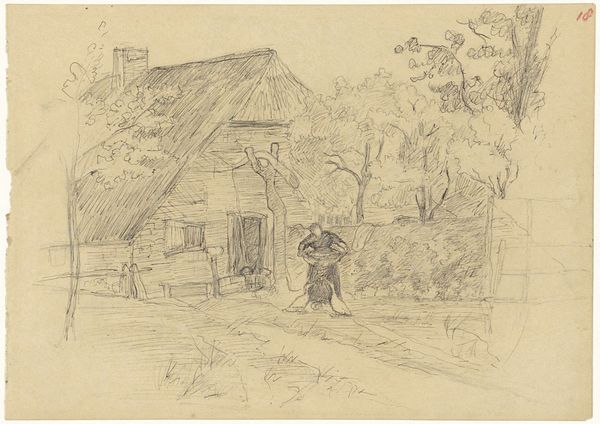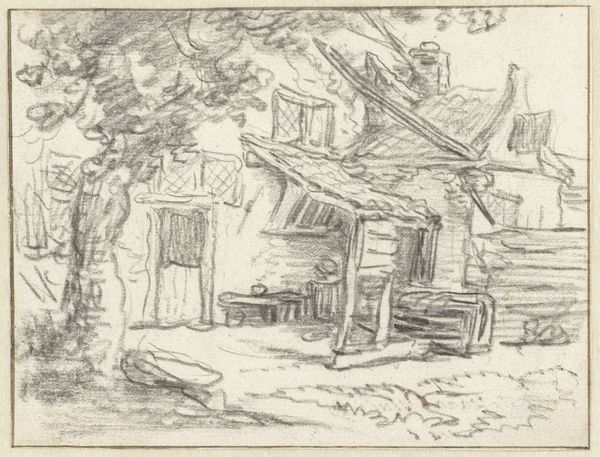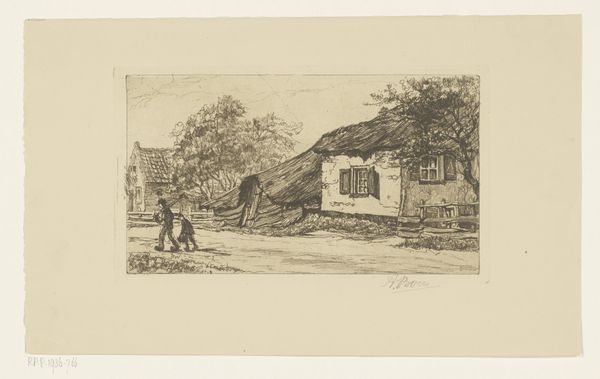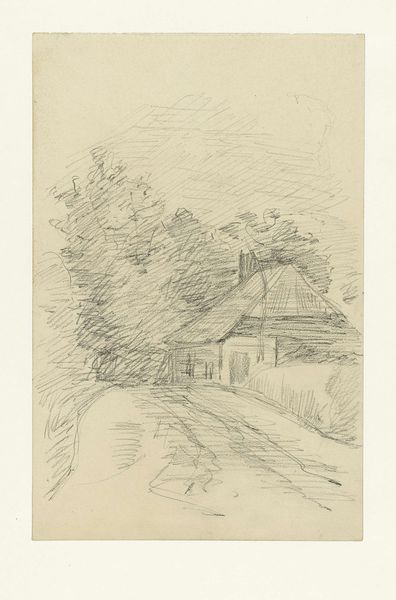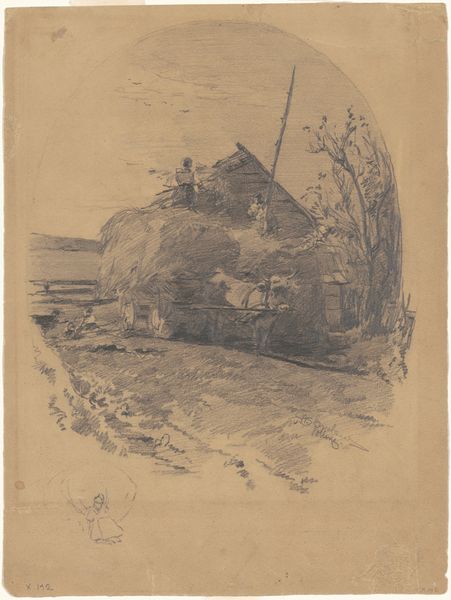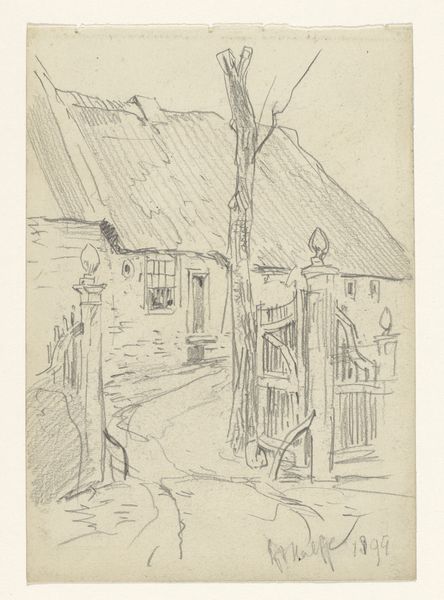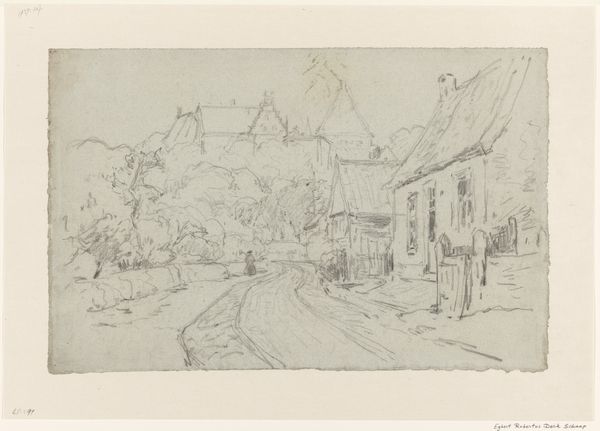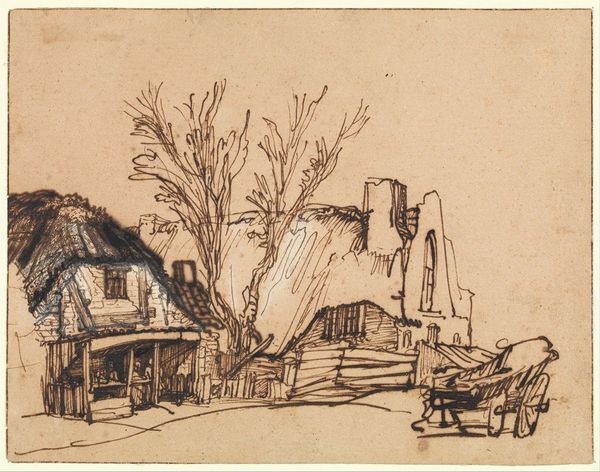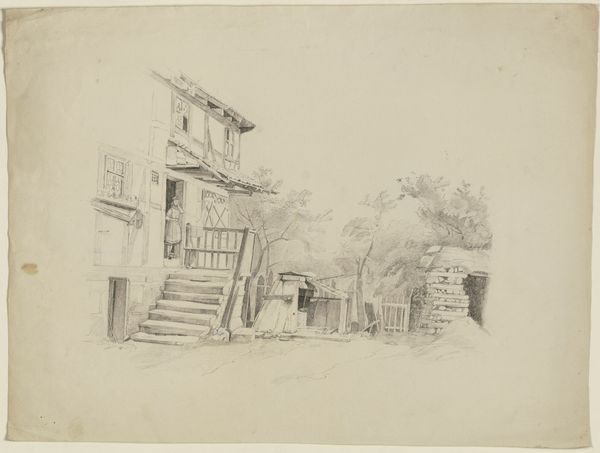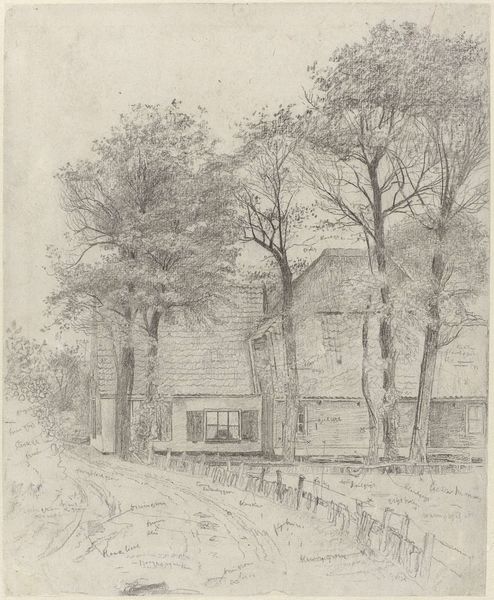
drawing, pen
#
landscape illustration sketch
#
drawing
#
quirky sketch
#
dutch-golden-age
#
impressionism
#
pen sketch
#
landscape
#
personal sketchbook
#
sketchwork
#
ink drawing experimentation
#
pen-ink sketch
#
sketchbook drawing
#
pen
#
genre-painting
#
storyboard and sketchbook work
#
sketchbook art
#
realism
Dimensions: height 285 mm, width 201 mm
Copyright: Rijks Museum: Open Domain
Editor: So, this drawing is "Ganzen voerende vrouw voor een boerderij" by Jozef Israëls, created sometime between 1834 and 1911. It's currently held at the Rijksmuseum, and it's done with pen. I'm struck by the simplicity, it almost feels like a preliminary sketch, not a finished piece. What jumps out at you? Curator: What I find compelling is how Israëls uses this "simple sketch" aesthetic to subtly engage with prevailing social and cultural views on rural life and labour. The direct translation is "Woman Leading Geese in Front of a Farm", and to our contemporary eyes, this looks like everyday life. How do you think the depiction of a rural woman resonates with its original audience? Editor: Hmm, I hadn’t really considered the audience! Perhaps it's a romanticized vision of simple country living? A life separate from industrialization? Curator: Precisely. Consider the broader context. This was a period of significant social and economic change. Israëls, who was associated with the Hague School, often depicted scenes of poverty and hardship. How does that contrast with a “romanticized” view? Could the lack of detail in the drawing be read as a kind of neutrality, neither glorifying nor condemning this woman's existence? Editor: I suppose that's possible. The bare lines give very little indication of a more detailed setting... It's like he’s just capturing a fleeting moment without imposing any overt narrative. Did his patrons want a clear political message or simply something comforting and picturesque? Curator: That’s the question isn’t it? Patrons were increasingly interested in what they saw as "authentic" depictions of Dutch life, however carefully that authenticity was constructed. Israëls’ work, in that sense, was contributing to and participating in a specific type of nationalist sentiment. I'd suggest it's not entirely neutral; there's a clear acknowledgement of her work. Editor: I see what you mean. Even in its understated nature, it directs our gaze to her existence. I’ve definitely gained a richer view of this work; thanks! Curator: And I am leaving with the thought about the role of nationalism in representations of women. Always something new to learn, isn’t it?
Comments
No comments
Be the first to comment and join the conversation on the ultimate creative platform.
